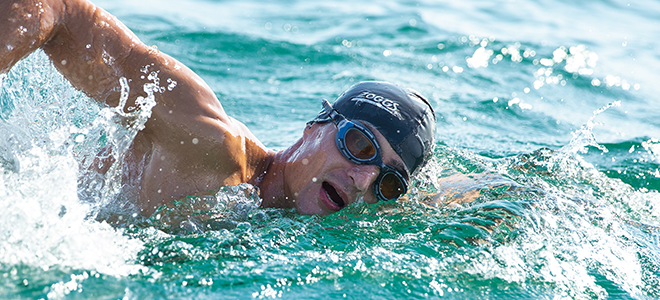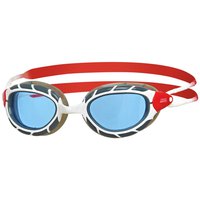
OPEN WATER ORIENTEERING BY JOSEBA CERCAS
Datum 26/04/2021
OPEN WATER ORIENTEERING BY JOSEBA CERCAS
Datum 26/04/2021
Orienteering is defined as the action of locating or positioning oneself with respect to a place, as well as the action of heading towards a specific place. It is one of the aspects that often makes the difference in competitions, both in crossings and in the swimming section of triathlons, especially in middle and long distance races. This is because swimmers who know how to orientate themselves correctly are less off course, they swim straight towards their goal, their pace is much more constant, and therefore, they swim faster. Here are the basic rules to keep in mind in order to orientate yourself correctly.

ORIENTEERING TECHNIQUE
To orientate yourself in open water, it is necessary to raise your head above the surface of the water to look ahead and thus control the direction in which you are swimming.
Avoid breathing forward, this is the most common mistake made by inexperienced swimmers. To do this you will have to take your whole head out of the water, which will cause your legs to sink and drastically increase resistance, even with a wetsuit on.
Lift your head as little as possible to see the target, as lifting your head too high penalises your position and will lead to increased energy consumption.
Incorporate targeting into your natural stroke rhythm.
PRE-COMPETITION PREPARATION
These basic tips can help you achieve a better result in your competition:
Study the course well before entering the water.
Count the number of buoys and note their colour, shape, size and position.
You should also know the approximate distance of the first and last buoy from the shore, as well as the distance between buoys.
On the day of the competition approach the shore, walk the course several times and look for the buoys with your eyes at sea level. Once you have identified them, look for large or taller objects on the horizon: mountain peaks, buildings, boats, trees...
Bear in mind that buoys are often difficult to see even if they are of considerable size, especially on days with waves and rough seas. It is easier to distinguish this type of object, so it will be much easier to keep straight between buoys.
Be aware of the wind direction and current, as they can easily divert you from your target even if you are steering correctly.
DURING THE COMPETITION
Look for the target as if you were looking at "stills" every time you steer. Keeping your head up too long will slow you down too much.
Don't orient yourself by looking at other swimmers. Although following the swimmer in front of you gives a sense of security and you can take advantage of drafting, anyone can drift at any given moment. Trust yourself and follow your own direction.
Adjust the number of times you steer depending on how straight you swim.

GOGGLES
Not wearing the right goggles or not taking proper care of them can cost you the competition, so:
Use goggles that fit you correctly and that you have tested in previous open water training.
Use the Zoggs "Ecofog Fogbuster" to prevent fogging of the goggles.
Avoid touching the inside of the lenses, especially if you use sunscreen and petroleum jelly.
Use glasses with lenses suitable for the day of the race: mirrored polarised on sunny days or orange on cloudy or rainy days.



























